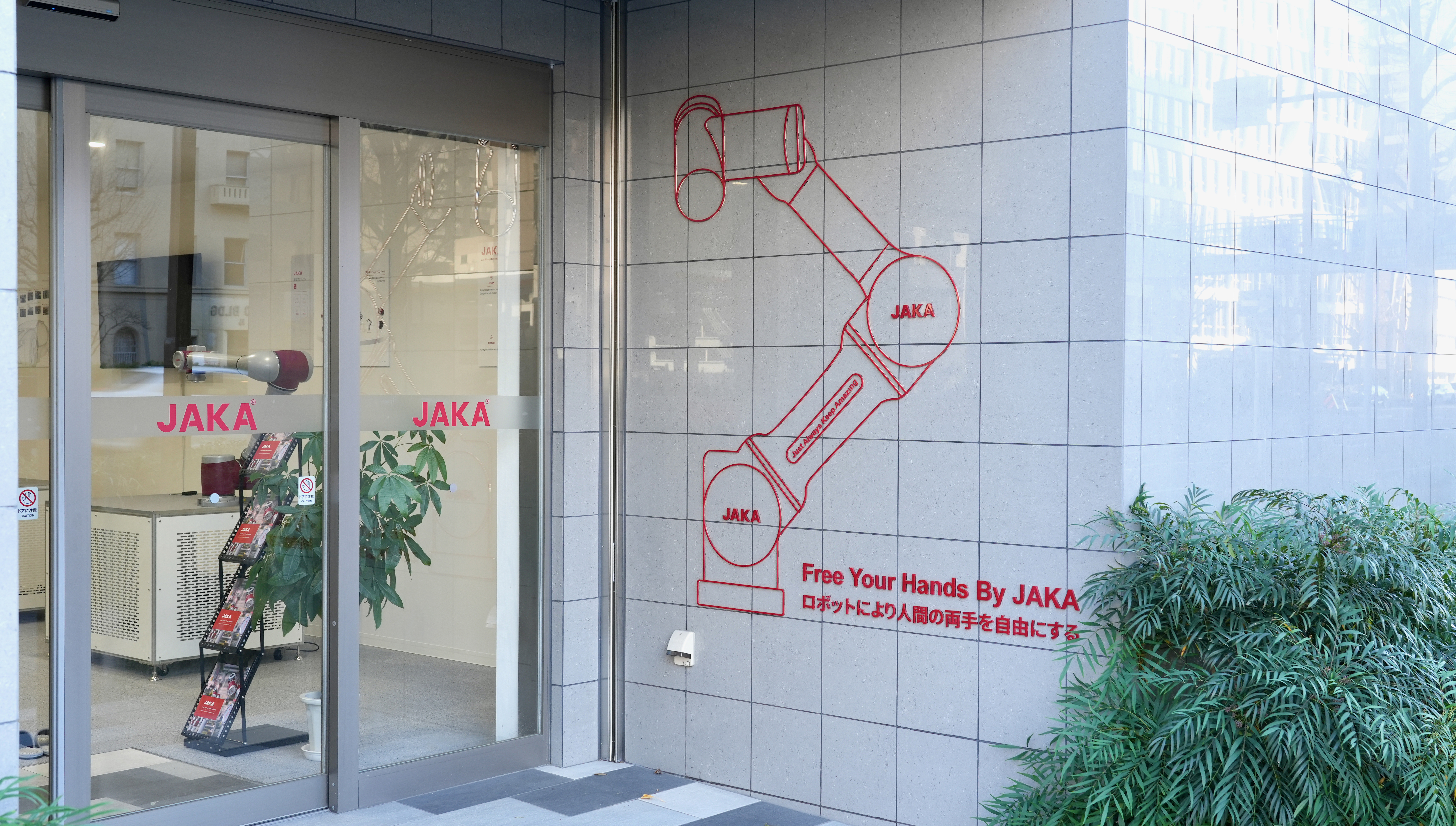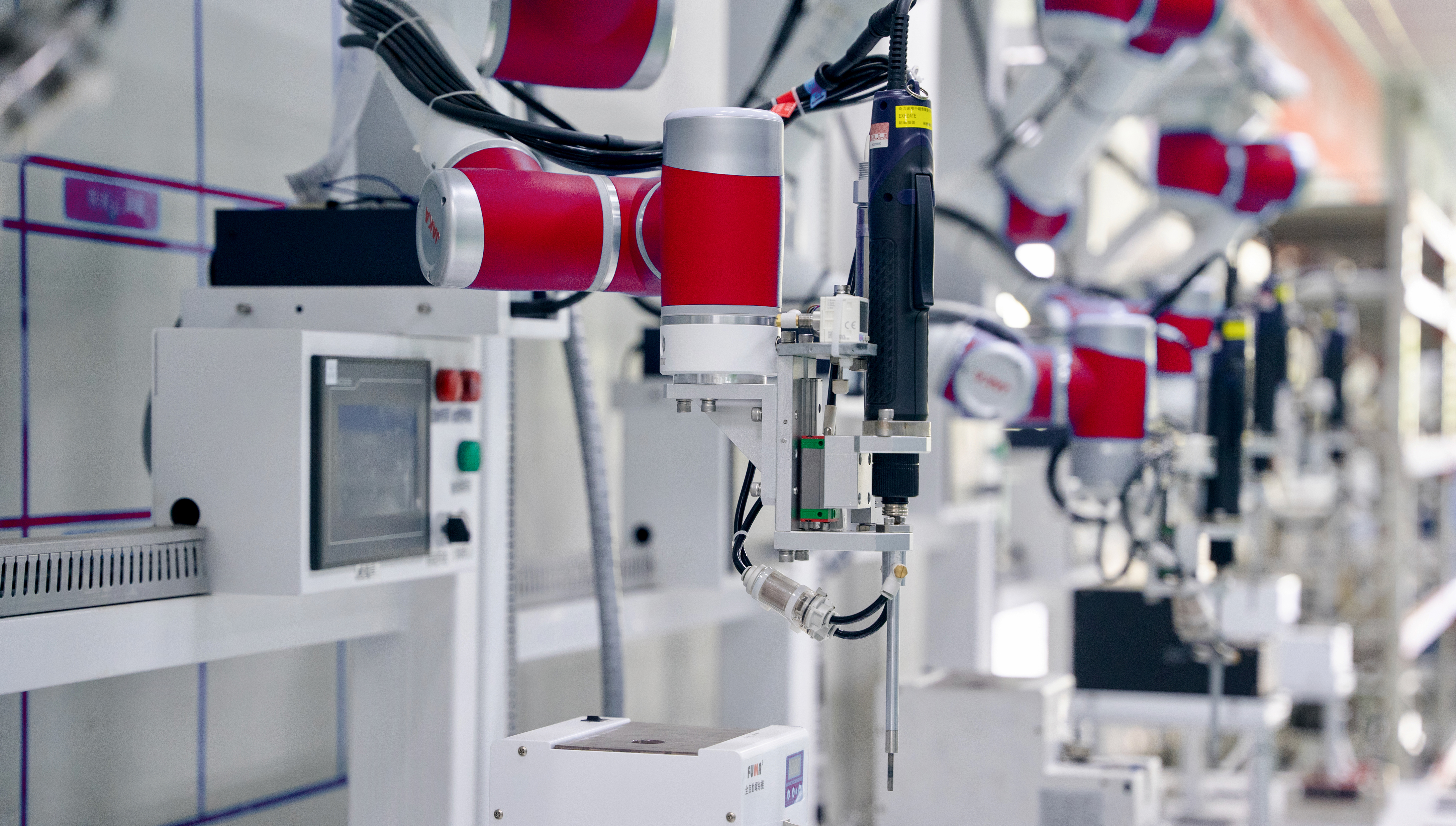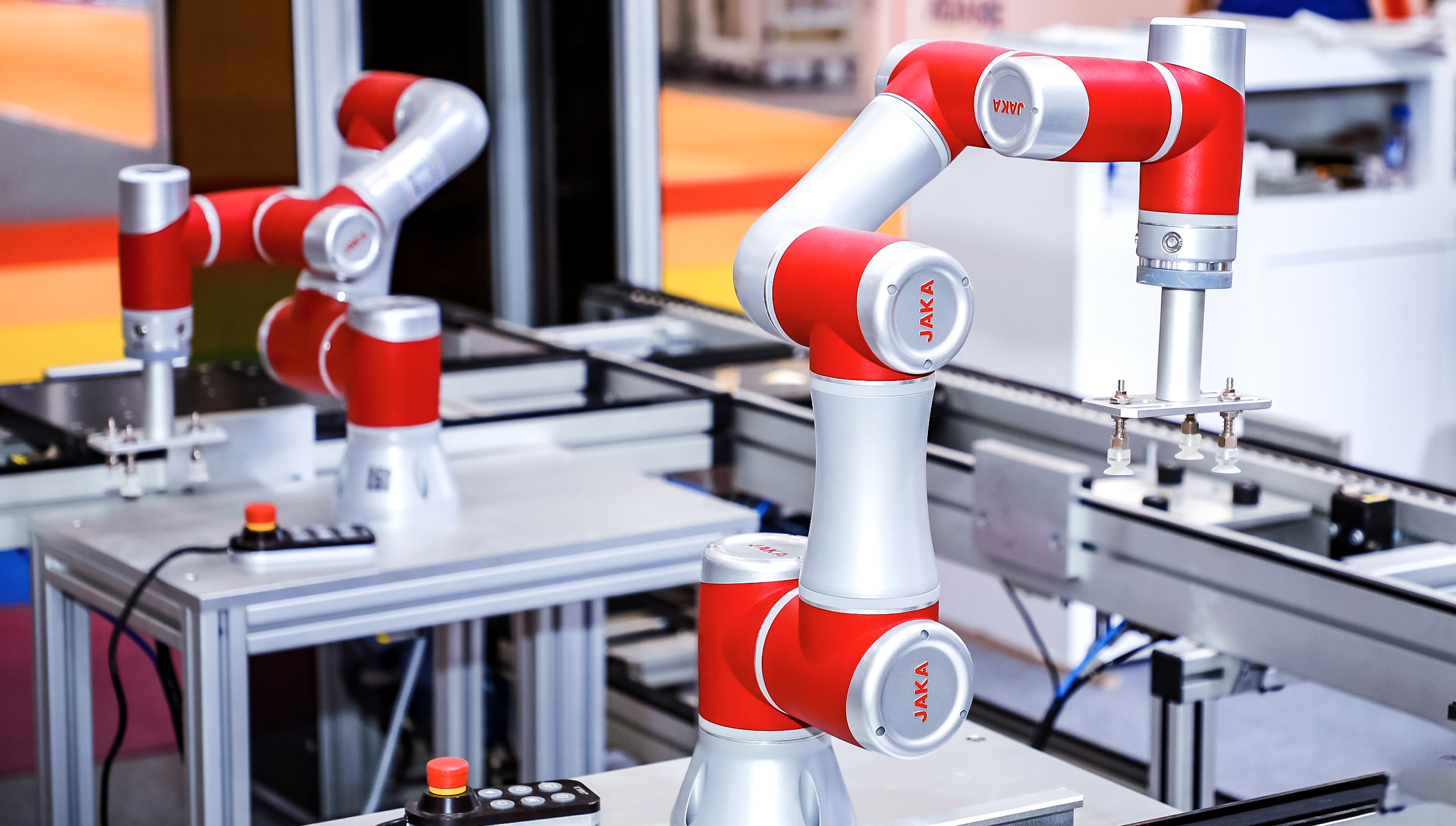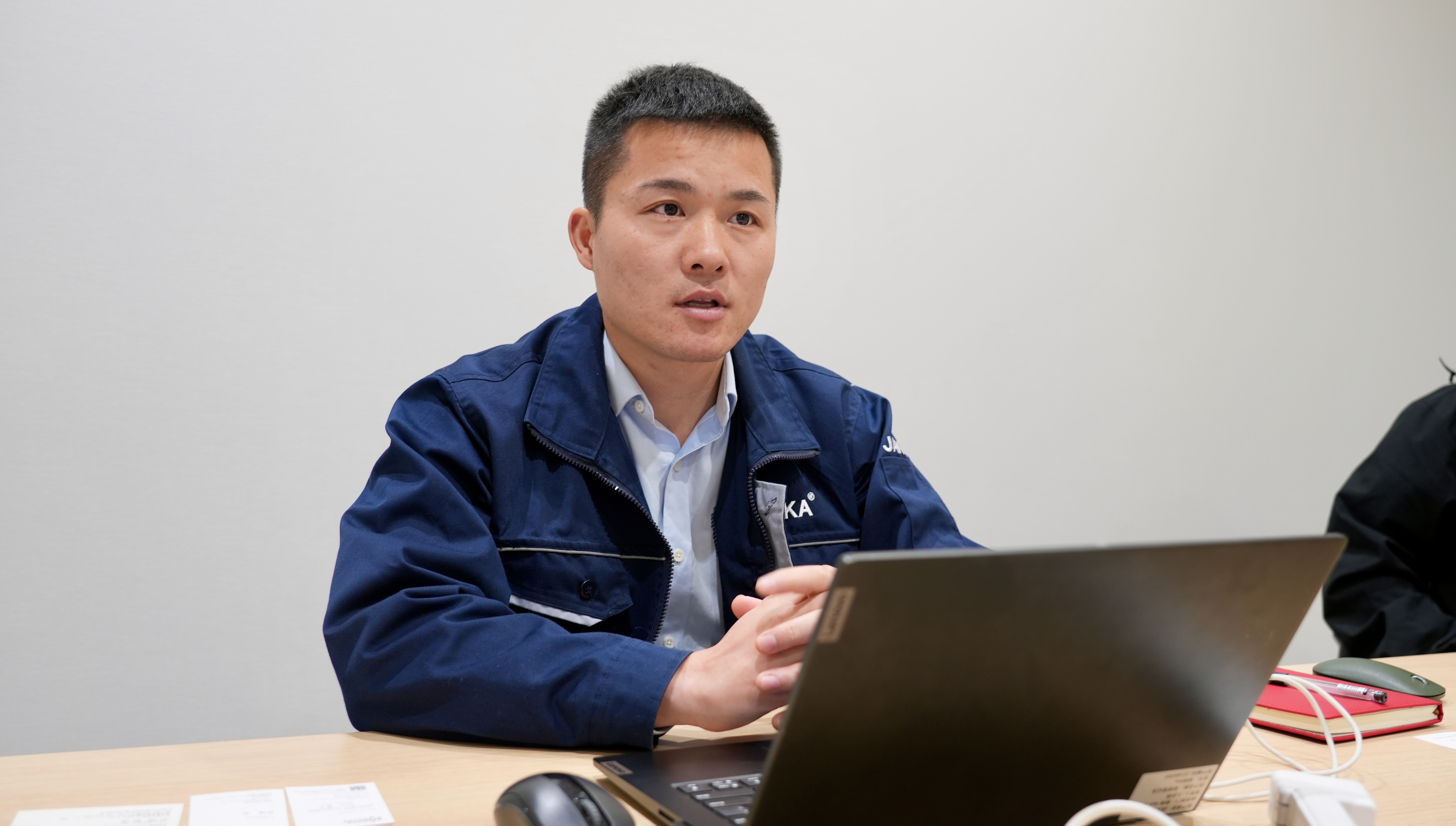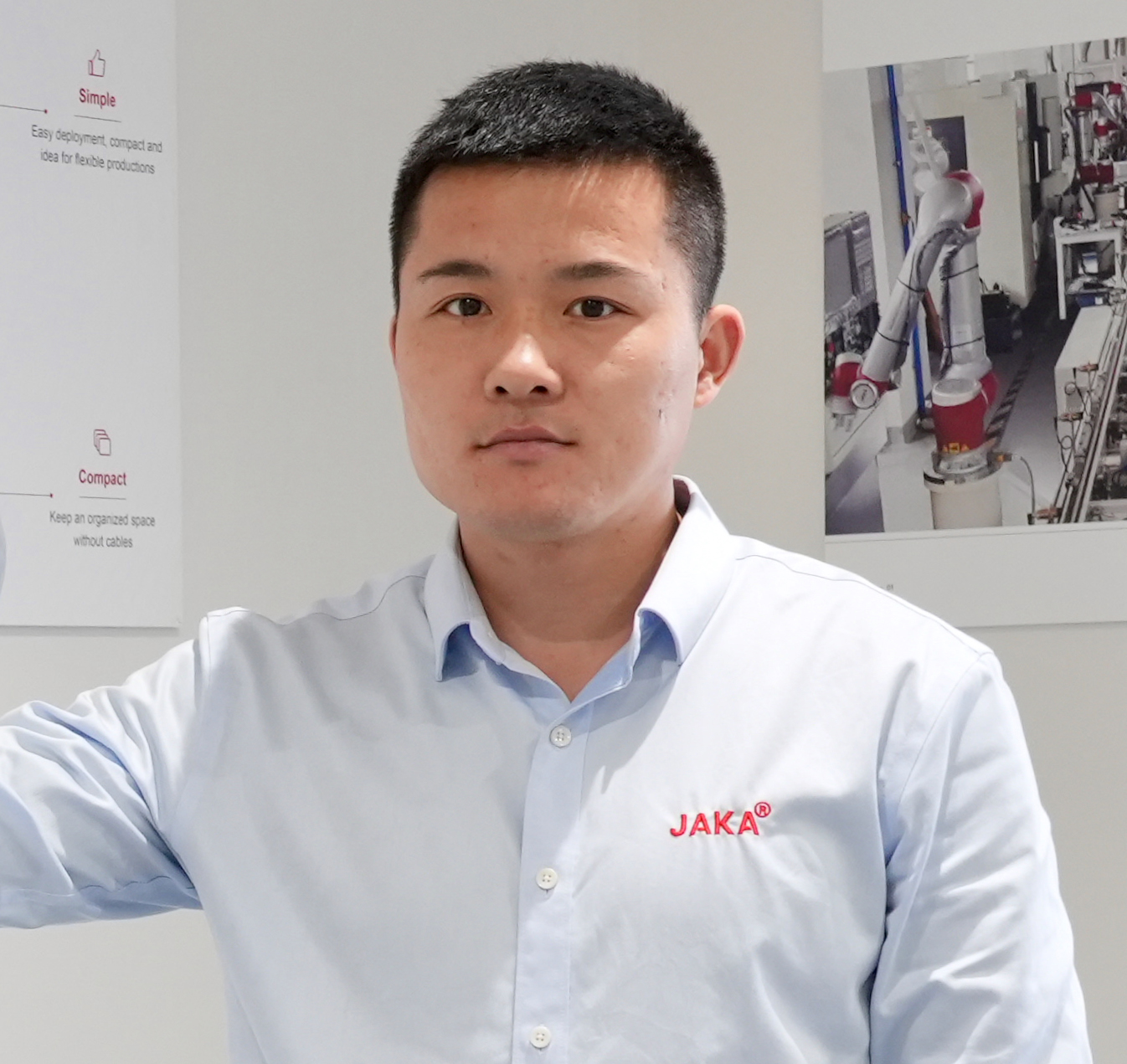Aiming for the No.1 market share of collaborative robots in Japan
Wang Yanqi
Division Director, JAKA Robotics Japan Co., Ltd.
- TOP
- INTERVIEWS
- Aiming for the No.1 market share of collaborative robots in Japan
Increasing demand for collaborative robots in production sites
Q. First, could you please tell us about the business operations of JAKA Robotics and your role, Mr. Wang?
The name JAKA stands for "Just Always Keep Amazing." We are a manufacturer of collaborative robots established in 2014.
Our headquarters is in Shanghai, China, with a production base in Changzhou, Jiangsu Province, about a 3-hour drive from Shanghai. The company has a registered capital of 65 million RMB, approximately 500 employees, and, in addition to China, has branches in Germany, Japan, and Malaysia.
I joined JAKA Robotics as an engineer in 2019 and am the head of the Japanese subsidiary, overseeing sales, technical support, after-service, and more.
Q. What exactly is a collaborative robot?
Traditionally, factories relied on large-scale industrial robots. However, collaborative robots are compact, lightweight, and designed to operate alongside humans in shared spaces. They are designed with safety in mind, such as automatically stopping upon contact with a person. Collaborative robots are not only used in large factories that manufacture automobiles but have become common in various types of manufacturing settings, including electronics parts, food products, and pharmaceuticals.
Most of the robots used in Japanese factories were industrial robots. In 2019, with measures put in place to halt the spread of COVID-19 and in response to labor shortages caused by declining birthrates and an aging population, there has been a push towards factory automation. Consequently, the demand for collaborative robots has also increased.
The appeal of Nagoya lies in its excellent transport access and supply chain
Q. Could you tell us about your decision to establish the Japanese subsidiary in Nagoya?
We decided to establish a Japanese subsidiary in 2020. Even before that, we were selling in the Japanese market through agents, but we decided to establish a subsidiary in Japan to enhance after-sales service for customers.
We chose Nagoya as our base because it is an automotive industry hub housing our key clients. It has a well-developed supply chain beneficial for future factory construction, and the location between Tokyo and Osaka also adds to its appeal.
Q. How do you find life in Nagoya?
I started living in Nagoya in August 2022 to prepare for the establishment of the corporation and have become very fond of it. The subway system is well-developed, making it convenient to go anywhere.
Initially, I was a bit puzzled by lunch. In China, delivery is the norm for lunch. You can order anything using your mobile phone. In Japan, it's not quite the same, so I got into the habit of going out to eat. Recently, I've become accustomed to Japanese food, and sometimes I visit Chinese restaurants around Shin-Sakae, near our company.
The intuitive differences between the Japanese and Chinese markets
Q. Have you encountered any difficulties or noticed differences between Japan and China in conducting business?
When purchasing products, Chinese customers tend to consider the product price first. In contrast, Japanese customers prioritize checking the product's performance and after-sales service before discussing price. Compared to Chinese customers, they are much more cautious, and it takes longer to decide on implementation. They conduct various tests to ensure the product is suitable for the factory before implementation.
Due to these challenges, many companies have given up on the Japanese market. However, once a product is introduced, it tends to be used for a long time. Furthermore, gaining recognition in the cautious Japanese market holds significant meaning for businesses looking to expand globally.
The Japanese market places particular emphasis on after-sales service, so we make an effort to ensure we can respond quickly to customer requests, securing their trust.
Q. What kind of support did you receive from the government when establishing your Japanese subsidiary?
Initially, I had no knowledge of the requirements to establish a corporation in Japan. Therefore, I consulted with JETRO (Japan External Trade Organization) and received various forms of support. They introduced me to tax accountants, judicial scriveners, and social insurance labor consultants. There are many documents to prepare and many procedures and inspections for incorporation in Japan, so this support was very helpful.
Q. Is there any support you would like from the government as you continue to expand your business?
Although our company is well-known in China, we are a venture company with low brand recognition in Japan. Therefore, it has been more challenging to recruit than we had hoped. We would appreciate support in increasing opportunities for matching our company with students.
There is still much we do not understand about the kinds of subsidies and tax exemption systems that are available in Japan. As we plan to proceed with facility investments such as factory construction in the future, it would be very helpful to receive information on these matters.
Q. Lastly, please share your business outlook for the future.
Given the rapid pace of advancement in our industry, we do not have a detailed long-term outlook yet. However, as a Japanese subsidiary, we aim to achieve the number one share of the collaborative robot market in Japan within the next three years. Regarding the factory we plan to construct, although it will be highly automated and will not require many people, we still plan to scale up to about 50 employees in the future.

